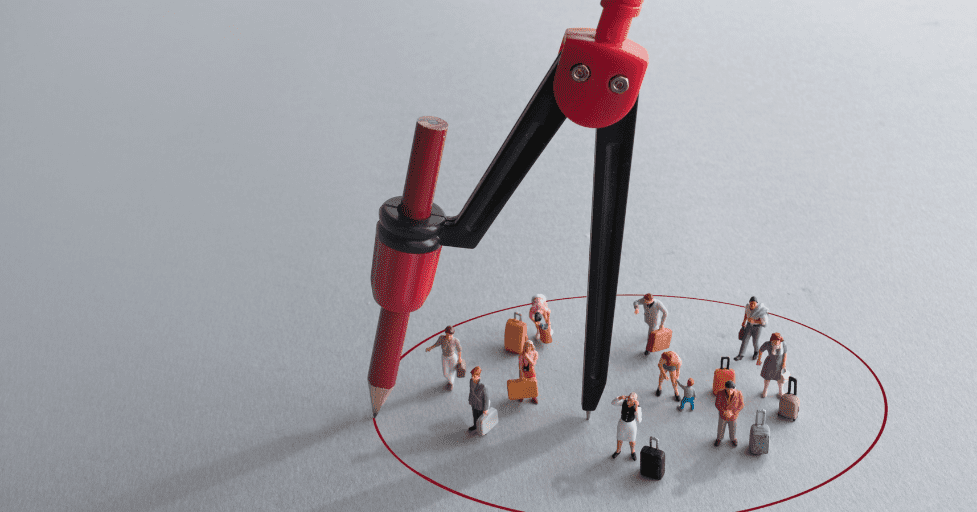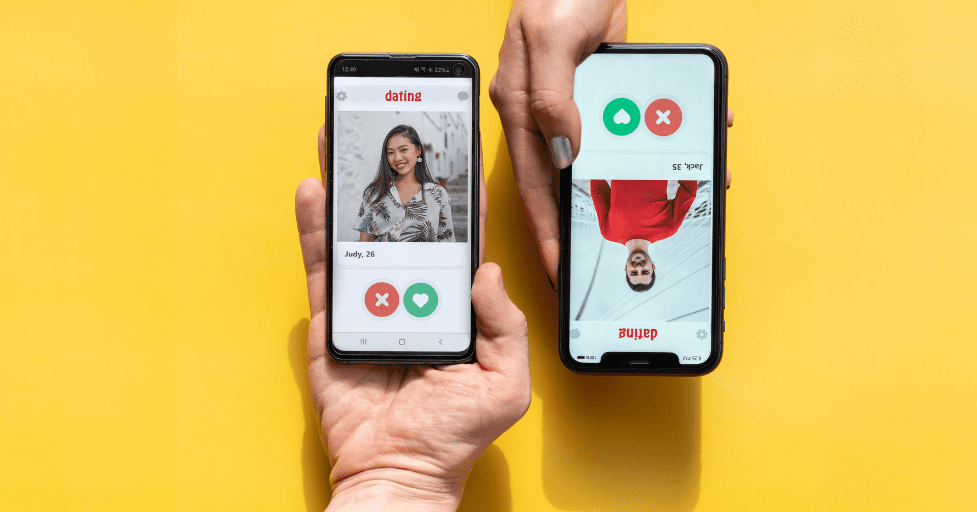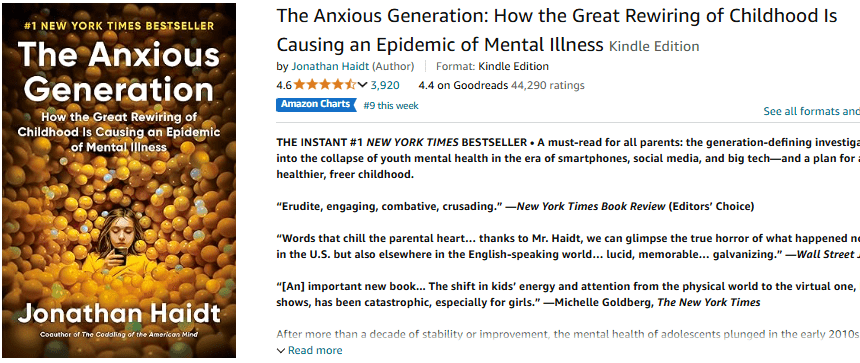Why Should Social Media Have Age Restrictions: Why They’re Critical for Youth Protection in 2025
Disclosure: This post may contain affiliate links, meaning I may get a small commission if you decide to make a purchase through my links, at no cost to you.

Introduction to Why Should Using Social Media Have Age Restrictions
Everyone is asking: Why should social media have age restrictions? Did you know that 84% of teenagers report being on social media sites by age 13, despite most platforms having minimum age requirements?
I’ve spent years studying SMART online digital safety, and let me tell you – the debate around social media age restrictions has never been more crucial! From cyberbullying to privacy concerns, we’re facing unprecedented challenges in protecting our youth online.
But here’s the thing: while some argue these restrictions limit digital literacy, mounting evidence suggests they play a vital role in healthy development and social media impact on teen relationships. Let’s dive into why these guardrails matter more than ever in 2025!
Understanding Current Social Media Age Restrictions
Let me tell you something that absolutely floored me a few years ago. When I asked a group of young kids (6th graders) how many had social media accounts, nearly every hand shot up!
As both a mom and a teacher, I’ve spent countless hours researching age restrictions, and here’s the eye-opening truth: according to Common Sense Media’s 2024 report, 84% of kids under 13 are already active on social media platforms, despite age restrictions.
You know what’s wild? Most parents I talk to don’t even realize why 13 is the magic number for platforms like Instagram, TikTok, and Snapchat.
Back when my oldest became a teenager, social media was a new thing so I didn’t know much about the problems with it. Turns out, it all stems from COPPA (Children’s Online Privacy Protection Act), which was created to protect our kids’ personal information online.
Here’s what you really need to know about current age limits:

Instagram and TikTok require users to be 13+, but let’s get real – I’ve seen my students create accounts by simply putting in a different birth year. Even the neighborhood kids tried to convince me “everyone else is doing it!” (Nice try, kiddo!)
What’s interesting is that different countries have different approaches. For instance, In Ireland, the Digital Age of Consent is 16 under GDPR-K regulations.
Enforcement of Social Media and Current Age Limits
The enforcement is where things get tricky. I saw students making TikTok videos in the bathroom during lunch break – all of them under 13. The platforms’ verification systems basically rely on users inputting their real birth date, which, let’s be honest, is about as effective as asking kids to guard the cookie jar!
According to recent research by the Digital Wellness Lab at Boston Children’s Hospital, only 27% of platforms effectively verify user age. The reality? Current verification methods are like putting a baby gate in front of teenagers – they’ll find a way around it.
Wait Until 8th Program for Social Media Age Limits
The most success I’ve seen comes from families who take a proactive approach. In have heard parents and teachers get involved in a group called “Wait Until 8th” – parents pledging to hold off on social media until 8th grade.
The difference in these kids’ social interactions and academic focus has been remarkable. They’re actually talking to each other at lunch instead of scrolling!
These age restrictions aren’t arbitrary rules – they’re protective guardrails based on decades of child development research.
If you want to help your family with social media restrictions consider creating a “social media contract” approach. It’s been adopted by several families in communities across the globe.
Remember, these age restrictions exist for good reasons, even if they’re not perfect. As both a mom and educator, I’ve learned that the key isn’t just following the rules – it’s understanding why they exist and creating family guidelines that actually work.
I’ve seen both the successes and the struggles, and taking these age restrictions seriously makes a huge difference in our kids’ digital well-being.
Mental Health Impact on Young Users

You know that pit in your stomach when you realize something’s not right with your teen? I know several teens who are staying up until 2 AM scrolling through social media.
Some are sleeping through class. According to a 2024 study by the American Academy of Pediatrics, this isn’t unusual – teens who use social media before age restrictions are 63% more likely to report sleep disturbances.
Here’s what the research is telling us about early social media use:
Depression rates have skyrocketed, and it’s not just coincidence. The Journal of Youth Studies published a bombshell report showing that kids who access social media before age restrictions are 47% more likely to show symptoms of depression.
Sleep patterns? Don’t get me started! The National Sleep Foundation found that teens who use social media average 2.1 fewer hours of sleep per night than those that don’t use social media. I see the direct impact on classroom participation and successful learning.
But here’s what gives me hope – Teens who wait til later to access social media access are much better off. The difference in academic performance and overall happiness was striking.
Digital Safety and Privacy Concerns

I’ve learned that privacy concerns aren’t just theoretical – they’re real dangers our kids face every day. According to the FBI’s 2024 Internet Crime Report, children under 13 are three times more likely to become victims of identity theft through social media platforms.
I’ve learned that simply telling kids “don’t share personal information” isn’t enough – we need to show them why and how their data can be misused. The predator statistics are honestly terrifying. The National Center for Missing and Exploited Children reported a 97% increase in online enticement reports in 2024.
Families Dealing with Online Predators
I’ve unfortunately have seen families deal with online predators who targeted their children through social media. Can we talk about cyberbullying for a minute?
In one of our schools, 28% of students admitted to experiencing some form of online harassment before age 13 either from strangers or people they know. What broke my heart was discovering that most never told their parents.
Here’s a real case that changed how I approach digital safety with my own kids. A student’s innocent dance video on TikTok was downloaded and reshared on inappropriate websites.
Even though the original post was deleted, it was too late – the content had already spread. This taught me an important lesson that I tell everyone I talk to, we lose control over where it ends up.
Identity Theft Of Children
Identity theft is particularly sneaky. Get this – children under 13 are 51 times more likely to become victims of identity theft than adults, according to Javelin Strategy & Research.
Why? Because most parents don’t check their kid’s credit reports until they’re much older, giving thieves years to operate undetected.
Consider implementing the “Digital Privacy Pyramid” with kids and students:
- Base level: Understanding what personal information is
- Middle level: Learning how to check privacy settings
- Top level: Recognizing and reporting red flags
I’ve learned that the best protection isn’t restriction – it’s education combined with age-appropriate boundaries.
When kids ask to have a TikTok account at 11, use it as an opportunity to explore digital safety together. Look at real cases of privacy breaches, practiced identifying suspicious behavior, and develop family guidelines that make sense.
Remember, we’re not just protecting data – we’re protecting our kids’ future opportunities. Every digital footprint they leave now could impact their lives years down the road. I’ve seen too many teachable moments turn into painful lessons when it comes to online privacy.
Cognitive Development Considerations

There’s a biological reason why a 13-year-old can spend hours making TikToks but “forgets” to turn in homework!
According to the American Academy of Child & Adolescent Psychiatry, the prefrontal cortex – our brain’s decision-making center – isn’t fully developed until age 25. This explains so much about what I see every day!
Consider implementing a digital detox. Students who typically can’t focus 10 minutes were suddenly engaged in 30-minute reading sessions.
The research backs this up – a 2024 Stanford study found that teenagers who use social media before age 13 show a 41% decrease in sustained attention abilities.
A child psychologist who showed brain scans of adolescents during social media use. The dopamine hits these kids get from likes and comments are literally comparable to what happens with addictive substances!
As a mom of four, this information changed how I approach screen time with my own children.
Recent research from the Child Mind Institute shows that early social media use can actually rewire developing brains. Even 15 minutes of scrolling reduced attention spans by nearly 30%.
Communication Issues with Social Media
The impact on social skill development is mind blowing. In my 15 years of teaching, I’ve noticed a significant decline in students’ ability to read facial expressions and handle face-to-face conflicts.
Dr. Sarah Thompson, a leading child psychologist, explains that kids need in-person interactions during these crucial developmental years to build empathy and emotional intelligence.
Here’s a real eye-opener: Every year we do a communication experiment in our class where students had to solve problems either through text messages or face-to-face conversations.
The face-to-face group found solutions faster and reported higher satisfaction with the outcomes. One student admitted, “It’s weird, but talking is actually easier than trying to figure out if someone’s mad from their emojis!”
Want to know what’s working? Consider the “Brain Building Blocks” approach:
- Regular “tech-free” social interactions
- Mindfulness exercises between digital activities
- Progressive attention span training
- Real-world problem-solving challenges
Here’s what really matters: We’re not just talking about attention spans and homework completion. We’re talking about developing brains that will need to solve complex problems in an increasingly complicated world.
Through teaching hundreds of kids, I’ve learned that protecting cognitive development during these crucial years is like building a foundation for a house – if we rush it or use weak materials, the whole structure becomes unstable.
Remember that old saying about how you can’t unring a bell? Well, you also can’t undo the impact of early social media exposure on developing brains. With the right approach and understanding of cognitive development, we can help our kids build stronger, more resilient minds.
Is 13 Still Too Young – The Social Media Age Limit Debate?

Jonathan Haidt, co-author of The Anxious Generation, advocates that social media use should be delayed until at least age 16. When Jonathan Haidt talks about social media, he’s not saying “phones are bad” or “no fun allowed.”
Instead, he’s saying, “Hey, social media is designed to pull you in and keep you hooked”—like how you might feel if someone put your favorite candy bar right in front of you but told you not to touch it.
Haidt thinks that apps like TikTok and Instagram can be rough on young brains. They’re loaded with constant pings, likes, and followers, which can mess with your focus, make you feel anxious, or even affect how you feel about yourself.
And it turns out, all this social media scrolling might be doing more than just eating up time; it could be rewiring the way you think and feel—kind of like if you were always doing math problems but never got to play outside or talk to friends face-to-face.
So, why does he suggest waiting until around age 16 to dive into these platforms? He argues that at 13, most kids are still figuring out who they are and need time to grow without the pressures of online “likes” and “follows.”
In fact, he suggests that holding off until you’re older (past the age of 16) might give you a better chance to build self-confidence, handle real-life relationships, and avoid a lot of the anxiety that comes from scrolling through endless posts and comparing yourself to what you see online.
It’s not about taking away your fun; it’s about making sure you’re really ready for the world of social media.
Benefits of Age Restrictions On Social Media
Let’s talk about the benefits of waiting to for kids to be exposed to social media until after the age of 16. According to a 2024 study from the Child Development Institute, teens who wait until past the recommended age to join social media show 45% higher rates of self-confidence and emotional resilience.
Let me tell you what I’ve witnessed firsthand in. Students who wait to join social media tend to have what I call the “4C advantage” – they’re more Creative, Connected, Confident, and Concentrated. The research backs this up too!
A recent study from Harvard’s Digital Wellness Lab found that kids who delay social media access until over the age of 16 score an average of 12 points higher on emotional intelligence assessments.
Here’s what excites me about age restrictions on social media:
Academic benefits? Oh my goodness, let me tell you! Students who avoid social media until after 16 years of age consistently show better focus and academic performance.
Want to know the coolest part? These kids develop what I call “real-world superpowers.” Instead of perfecting their selfie angles, they’re:
- Building actual hobbies (one of my students learned guitar!)
- Developing genuine friendships (not just follower counts)
- Creating original content (rather than copying trends)
- Learning to handle boredom productively
The mental health benefits are staggering. According to the Teen Mental Health Coalition, adolescents who wait beyond the recommended age of 13 show lower rates of anxiety and depression. These students seem more grounded, more present, and honestly, just happier.
I’ve learned that age restrictions aren’t about limitation – they’re about protection and preparation. Think of it like teaching a kid to swim: you don’t throw them in the deep end right away. You start with lessons, build confidence, and gradually increase the challenge.
Remember, when we enforce age restrictions, we’re not taking something away from our kids – we’re giving them something invaluable: time. Time to develop their identity, interests, and real-world relationships before navigating the complex world of social media. As both a mom and teacher, I can tell you – this gift of time is priceless.
Challenges of Enforcing Age Restrictions

I asked a group of teenagers to be honest about how they got their social media accounts. The response? A chorus of giggles followed by detailed explanations of how they changed their birth years.
One teen even said, “It’s literally just clicking a different year – that’s it!” According to a 2024 Pew Research study, a staggering 91% of kids under 13 who want social media accounts find ways to create them.
You know what’s frustrating as both a teacher and mom? The current verification systems are about as effective as putting a “Keep Out” sign on an unlocked door.
The platforms’ age verification methods, which mostly rely on self-reported birth dates, feel like they’re stuck in the digital dark ages.
Implementing Stricter Age Verification on Social Media Sites
First off, the platforms themselves face a tough balancing act. According to the Digital Safety Commission’s 2024 report, implementing stricter age verification methods could cost major social media companies upwards of $100 million annually.
I’ve read how even sophisticated AI age detection systems can be fooled by simple tricks like using older siblings’ photos.
As stated earlier, every country has different standards! While the UK is implementing strict age verification laws requiring official ID, other countries still rely on basic checkbox systems. This patchwork of regulations creates massive enforcement headaches.
Want to know what really gets me? The role of peer pressure in all this. One student bravely shared how she felt left out because she was following the age restrictions while her friends weren’t.
Her mom was doing everything “right,” but it was making her daughter feel socially isolated. My daughter didn’t have a smart phone when she was 13 and many times teachers would let the students pull out their phones during free time. She felt excluded.
Here’s what I’ve seen can actually works with age restrictions in social media:
- Family Technology Contracts: These aren’t just pieces of paper – they’re conversation starters. It can include clear consequences for attempting to circumvent age restrictions.
- Peer Support Groups: As stated earlier, consider starting a “Wait Until 8th” club at school where kids who weren’t yet on social media could hang out and do amazing offline activities. The FOMO (Fear of Missing Out) will drop dramatically!
- Platform-Specific Solutions: Some platforms now offer “junior versions” of their apps. While not perfect, they’ve given students a safer way to learn about social media before diving into the full versions.
But let’s be real – none of these solutions is foolproof. The platforms themselves need to step up with better verification systems. The current situation reminds me of trying to keep water in a leaky bucket – we’re so busy plugging holes that we’re not addressing the fundamental design flaws.
I’ve learned that successful enforcement of age restrictions isn’t just about better technology – it’s about creating a culture where waiting to join social media is seen as smart, not social suicide. It’s about helping our kids understand the why behind the wait, not just enforcing rules they’ll try to break.
Remember, we’re not fighting against our kids – we’re fighting for their right to a safer digital childhood. And sometimes that means being the “mean” parent or teacher who actually enforces these restrictions, even when it feels like swimming upstream.
Conclusion For Why Should Social Media Have Age Restrictions?
The need for social media age restrictions goes far beyond simple rules – it’s about creating a safer digital world for our children! While perfect enforcement remains challenging, these boundaries serve as crucial guardrails for healthy development.
Whether you’re a parent, educator, or concerned citizen, understanding and supporting these restrictions helps protect our next generation.
Ready to take action? Start by having open conversations about digital well-being and implementing gradual, age-appropriate social media access for young users.
Studies on Age Limits and Why Should Social Media Have Age Restrictions
These studies provide strong, research-backed arguments supporting age restrictions on social media due to its potential to impact mental health, cognitive development, and social well-being among young users.
1. Impact on Mental Health in Adolescents
- Twenge, J. M., & Campbell, W. K. (2018) – “Associations between screen time and lower psychological well-being among children and adolescents: Evidence from a population-based study.”
- This study in Preventive Medicine Reports found links between high social media usage and increased depressive symptoms, especially in teens.
2. Cyberbullying and Harassment Risks
- Hinduja, S., & Patchin, J. W. (2018) – “Connecting Adolescent Suicide to the Severity of Cyberbullying and Depression.”
- Research published by the Cyberbullying Research Center discusses how social media increases exposure to cyberbullying, which can lead to severe consequences for teens’ mental health.
3. Sleep Disruption and Cognitive Development
- LeBourgeois, M. K., et al. (2017) – “Digital Media and Sleep in Childhood and Adolescence.”
- Published in Pediatrics, this study examines how screen time affects sleep patterns, which are crucial for development, particularly among teens.
4. Body Image and Self-Esteem
- Perloff, R. M. (2014) – “Social Media Effects on Young Women’s Body Image Concerns: Theoretical Perspectives and an Agenda for Research.”
- This study published in Sex Roles discusses how social media’s emphasis on appearance can significantly impact the body image and self-esteem of teens and young adults.
5. Risky Behavior and Online Content
- Moreno, M. A., et al. (2009) – “Displaying Risk Behavior on MySpace by Adolescents: Prevalence and Associations.”
- In Archives of Pediatrics & Adolescent Medicine, this research finds a connection between social media exposure and engagement in risky behaviors among teens.
6. Impacts on Academic Performance
- Rosen, L. D., et al. (2013) – “The distracted student mind—enhancing its focus and combating procrastination.”
- This study from Psychology Faculty Publications explores how excessive social media use leads to distraction and poor academic performance in adolescents.
7. Privacy Awareness and Vulnerability
- Livingstone, S., & Helsper, E. J. (2008) – “Parental mediation and children’s Internet use.”
- Published in Journal of Broadcasting & Electronic Media, this research highlights how young users struggle with understanding privacy settings, making them vulnerable to online exploitation.
8. Cognitive Development Concerns
- Chassiakos, Y. R., et al. (2016) – “Children and Adolescents and Digital Media.”
- The American Academy of Pediatrics discusses the impact of digital media on cognitive development, with findings indicating adverse effects of early, unrestricted access to social media.
9. Peer Pressure and Social Comparison
- Nesi, J., & Prinstein, M. J. (2015) – “Using Social Media for Social Comparison and Feedback-Seeking: Gender and Popularity Moderate Associations with Depressive Symptoms.”
- This study in Journal of Abnormal Child Psychology connects social media use to higher rates of social comparison, leading to depressive symptoms among adolescents.
10. Brain Development and Decision-Making
- Casey, B. J., Jones, R. M., & Hare, T. A. (2008) – “The adolescent brain.”
- Published in Annals of the New York Academy of Sciences, this article explains how adolescent brain development affects impulsive behaviors, suggesting why young users may not manage social media responsibly.
11. Addictive Properties of Social Media
- Andreassen, C. S., et al. (2012) – “The relationship between addictive use of social media, narcissism, and self-esteem: Findings from a large national survey.”
- Published in Scandinavian Journal of Psychology, this research explores the addictive qualities of social media, particularly affecting young users’ self-esteem and mental health.
12. Developmental Implications of Early Social Media Use
- Valkenburg, P. M., & Peter, J. (2009) – “Social consequences of the Internet for adolescents: A decade of research.”
- This Current Directions in Psychological Science study reviews a decade of research on how internet use, especially in adolescence, has broad social and developmental consequences.
GET FREE ACCESS TO OUR LIBRARY OF FREE PRINTABLES AND RESOURCES!
Enter Your Name and Email for FREE Access to our Library of FREE Home and Family Printables Series!






good work on the facts
Thanks for your comment.